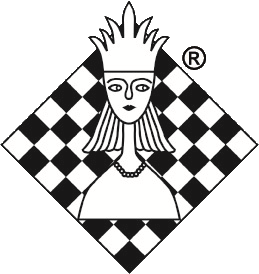 The
Greatest Chess Player of All Time – Part III
The
Greatest Chess Player of All Time – Part III
By Jeff Sonas
This is the third installment in a four-part series where I am using various
statistical techniques, applied to my brand-new Chessmetrics
data, to explore the following question:
Was Garry Kasparov the most dominant chess player of all time? If not,
who was?
In Part I we saw that Emanuel Lasker spent the longest amount of
time at the top of the rating list in chess history, as well as the longest
amount of time as world champion (unless it was Steinitz). We saw that Wilhelm
Steinitz and Bobby Fischer had the largest rating gaps compared to the rest
of the world. And then in Part II we saw that Bobby Fischer had the
highest rating of all time, and that the two greatest single-event performance
ratings of all time were achieved by Anatoly Karpov (best tournament performance
ever, at Linares 1994) and Bobby Fischer (best match performance, in Fischer-Larsen
match 1971). Where, then, is the justification for claiming that Garry Kasparov
might be the most dominant player of all time?
Despite the impressive accomplishment of Karpov at Linares 1994, it is nevertheless
very clear that Garry Kasparov had the most impressive tournament career of
any player in chess history. You may have noticed from the final graph in Part
II that although Karpov did have the best-ever single tournament performance,
it was Kasparov who had five of the top ten of all time, and the story doesn't
change much as you run further down the list. For instance, out of the top
fifty tournament performance ratings of all time, Kasparov had seventeen of
them, with nobody else having more than six:

Despite his fifteen-year run as world champion, with many successful title
defenses, Kasparov was significantly more successful in tournaments than in
matches. Over the course of his career, he was probably about 40-45 points
stronger in tournaments than in matches. For instance, he actually lost rating
points over the course of his career in match play. Based upon Kasparov's ratings,
and the ratings of his opponents, Kasparov could have been expected to score
58% in his matches and he actually scored 57%. On the other hand, despite his
high rating, Kasparov gained rating points in three-fourths of the tournaments
that he played in, averaging a 69% score rather than the 66% score that his
rating would have predicted. This pattern held true even more strongly if you
only consider events where his average opponents' rating was 2700+.
As impressive as that above list is for Kasparov, it is important to recognize
the context within which these accomplishments occurred. It has been far easier
to play in a large number of tournaments in recent years than in the first
half of the twentieth century, for instance, with its wartimes and inferior
travel opportunities. Nevertheless, the above list is hardly skewed towards
recent years if you look at the remaining 33 tournament performances of 2820+.
That's about as far as I can go with single-event performance ratings. However,
there are certainly other ways to measure tournament success. Rather than performance
ratings or rating point gains, a more tangible measure would be to look at
actual first-place finishes in top tournaments. And as you might expect, Kasparov
is at the top of the list however you look at it.
I mentioned in Part I that I had invented a new way to calculate the "category"
of historical tournaments. I have written a lot about this topic in the past,
although it was a few years ago. In mid-2000 I was commissioned by KasparovChess.com
to write an article somewhat similar to this one, in which I tried to place
Kasparov's 1999-2000 tournament success in its proper historical context. In
order to compare tournament successes across history, there needs to be a way
to make valid comparisons. And the traditional measure of tournament strength,
the "category", is going to show a bias towards recent years, partially
because of FIDE rating inflation but even more so because of the quantity of
highly rated players these days. It is relatively easy to assemble a tournament
field with a high average rating, just because there are so many players to
choose from. As an example, 28 of the top 30 category tournaments (using Chessmetrics
ratings) occurred within the past twenty years. The only exceptions were the
super-elite tournament held in St. Petersburg 1895 and the World Championship
tournament of 1948.
The approach that I used in that article five years ago, building upon an
original suggestion from Kasparov to use historical top-ten lists rather than
ratings, still seems like a sound one, so I am still using it with my new data.
My idea is to assign points to each tournament based on the participation of
the top-ranked player in the world (worth four points), the #2 player (worth
four points), the #3 or #4 player (worth three points each), the #5 or #6 player
(worth two points each), and/or the #7 through #10 players (worth one point
each). The overall number of points for the tournament should be roughly comparable
to the traditional "Category" of the tournament. I call this classification
the "class" of a tournament. There is lots more about this on my
Chessmetrics site, including historical rankings of the highest-class tournaments.
One of the things I show is that the "strongest" tournaments (based
on "class") are distributed much more evenly across time, rather
than the highest category listing, where the top-30 list of tournaments is
still more than 90% made up of tournaments from the past twenty years.
It is a historical curiosity that there has never been a tournament that included
all of the top ten players in the world, other than the famous 1970 "USSR
vs. The Rest of the World" team event (which really shouldn't count as
a tournament). In fact, there has never even been a tournament with the top
nine players from the rating list. There have, however, been six tournaments
in chess history that included the top eight from the rating list. Two of them
(Vienna 1882 and Linares 1993) also included the #10 player and so they share
the distinction of being the highest-class tournaments ever (Class 21). The
other four tournaments were missing both the #9 and #10 players from the rating
list, and so they count as Class 20. Those tournaments were Nottingham 1936,
AVRO 1938, Linares 1992, and Corus 2001 (Wijk aan Zee).
I'm amazed that I never noticed this until a few days ago, but it turns out
that only one player in chess history has ever won clear first place in a tournament
that included the top eight players in the world (i.e., one of those six tournaments
I just listed). Guess who is the one player? Garry Kasparov actually achieved
this unique feat three different times: twice at Linares and once at Wijk aan
Zee. All three of the other tournaments ended with a tie for first place.
Even if you get slightly less exclusive, and go down to the tournaments that
included all of the top five players in the world, the list is still dominated
by Kasparov. Only five players have ever won clear first place in such a tournament.
Emanuel Lasker accomplished it twice: Nuremberg 1896 and St. Petersburg 1914,
and three others managed it once (Johannes Zukertort at London 1883, Viswanathan
Anand at Reggio Emilia 1991, and of course Anatoly Karpov at Linares 1994).
Garry Kasparov, on the other hand, did this more times than everyone else combined,
a total of six times (including the three already mentioned, plus Belfort 1988,
Las Palmas 1996, and Wijk aan Zee 1999). Just for comparison, Bobby Fischer
only played one tournament in his entire life that even had the top three players
in the world: Bled/Zagreb/Belgrade 1959, where he finished fifth.
So I think it is indisputable that Kasparov had the most dominant tournament
career of anyone in chess history. Nobody else is even close. And in match
play, he held the world title for a very long stretch, and in fact never lost
a match to any human until the 2000 match against Kramnik where he lost a grand
total of two games. Thus it will come as little surprise that since 1985 Kasparov
was ranked first for an extremely long stretch.
My Chessmetrics ratings are calculated at the start of each month, using all
known game results at that point. Thus players' ratings are actually recalculated
during any events that span across multiple months. The first world championship
match between Karpov and Kasparov certainly qualifies as a "multiple-month
event". Kasparov began the match in September of 1984 with a 34-point
rating advantage over Karpov. That rating lead quickly dwindled after Karpov's
superlative start to the match, and by game #20 Karpov had retaken the #1 spot.
It was not until February of 1985, after winning game #47 of the same match,
that Kasparov finally regained the #1 spot, which he then held for almost twenty
straight years. This put Kasparov firmly at the top of the next measurement:
consecutive months as #1 on the rating list.

Perhaps even more impressive is the firmness with which Kasparov held onto
his #1 spot. For a stretch of 18.5 years, not a single other player even came
within 10 rating points of Kasparov on any of the monthly lists. Nobody else
in chess history has come remotely close to having such a stretch of dominance
like that, with Lasker managing 8.8 years, and Karpov 7.8 years, before anyone
came within 10 points of them.
Kasparov finally fell out of the #1 spot on my monthly Chessmetrics rating
lists on November 1st, 2004, where the combination of Kasparov's poor performance
at the European Cup in October, and Anand's excellent score at the Calvià Olympiad
in October, finally lifted Anand into the #1 spot, ending one of the most impressive
streaks in chess history. This means Kasparov was actually not the favorite
at Linares 2005, since Anand was still ranked #1. It was the first time in
24 years that Kasparov did not go into an event as the Chessmetrics rating
favorite (going all the way back to Moscow 1981, where the 18-year old Kasparov
shared second place behind world champion Karpov, ranked #1 in the world).
My original plan was to stop my analysis, and my series of articles, at this
point. I was going to tell you that I had done the best I could, to present
these various explorations into the question of who was the most dominant player
of all time, and that it was up to you to pick which factor(s) you consider
the most relevant. However, a few days before writing this I hit upon another
avenue of analysis that I think is really interesting and exciting, and certainly
sheds some additional light on the question of who was most "dominant".
So instead of a mere three-part article, you're getting a bonus Part IV in
a few more days. Hopefully it will be worth the wait...


















 The
Greatest Chess Player of All Time – Part III
The
Greatest Chess Player of All Time – Part III




